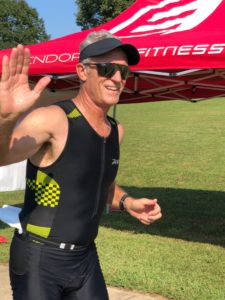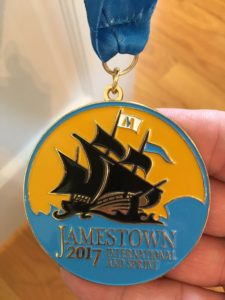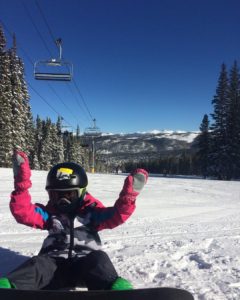I’ve pulled the trigger, so to speak, on running my first half-marathon.
I sort of can’t believe it. Actually, no sort-of about it. As I often tell friends, there is no way I pictured myself as an endurance runner, biker, swimmer, endurance anything ever in my lifetime as recently as two years ago. That kind of torture-your-body stuff held no appeal for me. Zero. But once I accidentally fell into doing triathlons – my first was a sprint in Santa Cruz two years ago on a whim to accompany my daughter – it gradually, to my surprise, became serious enough that I now pay a trainer every month to design workouts so I can get stronger and compete better within my age group. I am down that rabbit hole, in other words. 
By that relation, then, my physical stamina has improved to where the thought of a six-mile run no longer intimidates me or my knees; I actually look forward to them. (Who IS this stranger?!) But only recently have I considered stepping up to race twice that distance (plus 1.1 miles).
Among the many things that training consistently, really for the first time in my life, and confidently have taught me is to not be afraid of new challenges. Respect them, for sure, and protect myself from injury always. There is nothing I dread more, except hitting a fly-over-the-handlebars pothole, than a foot or leg injury setting me way back and canceling all the conditioning gains I’ve made. At 60, lengthy rehab processes are not welcome.
That’s a long way of saying I stopped pondering signing up for a half-marathon in Richmond in five weeks and actually committed to the 13.1 miles the other day. (Dee, a strong natural runner despite her denials, will join me there for the 8K.) Longtime runners and endurance racers will scoff at my little proclamation, and that fact that I admit to being a little afraid of it. Trepidatious? I’m pretty sure seven miles is the longest I’ve ever run at one time; I pokey-poked out that distance sometime last year. But wonderfully amid all that, I have discovered a new-found belief in myself as a (competitive) athlete that I thought was long past. It brings me back every day. I train with gratitude for being able to run, ride or swim (with relative little pain at this point) in the first place. I find satisfaction in a new identity and a physical relevance that makes me happy.
Advice I’ve found online, as well as from my coach, cautions me to focus on completing this first half without a time goal, to not let the adrenaline of race day and a too-quick start ruin my run, to more than anything breathe in the scene. Accept as its own reward the act of stepping up to a challenge and staring it down.
So yes, I hope to keep my wits and keep it real, firm in the faith that this half is just another next step toward keeping me whole.



